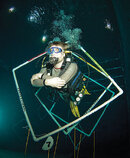The problem that this concept is trying to solve, obviously, is that this kind of training is not part of the current recreational training of just about all recreational training agencies. I agree that it is a problem, but I also agree with those who say that the proposed solution will not be well received.
My solution to the problem, which will soon be implemented in our area, will be to offer just such a program through a specific dive shop. It is easy for anyone who has anything like those skills to create just such a program. If the program is marketed properly, and if students are interested in it, then it will be popular. If it is popular, then other shops in the area will say, "Hey, maybe we should have that, too." Then perhaps they will take steps to implement it. If enough shops do that, then the agencies might say, "Hey, maybe we need a formal program like that."
A lot of shops have instructors on their current staffs who have the training to do what you describe. All it takes is for them to think it is a good use of their resources, as I believe it is.
My solution to the problem, which will soon be implemented in our area, will be to offer just such a program through a specific dive shop. It is easy for anyone who has anything like those skills to create just such a program. If the program is marketed properly, and if students are interested in it, then it will be popular. If it is popular, then other shops in the area will say, "Hey, maybe we should have that, too." Then perhaps they will take steps to implement it. If enough shops do that, then the agencies might say, "Hey, maybe we need a formal program like that."
A lot of shops have instructors on their current staffs who have the training to do what you describe. All it takes is for them to think it is a good use of their resources, as I believe it is.




